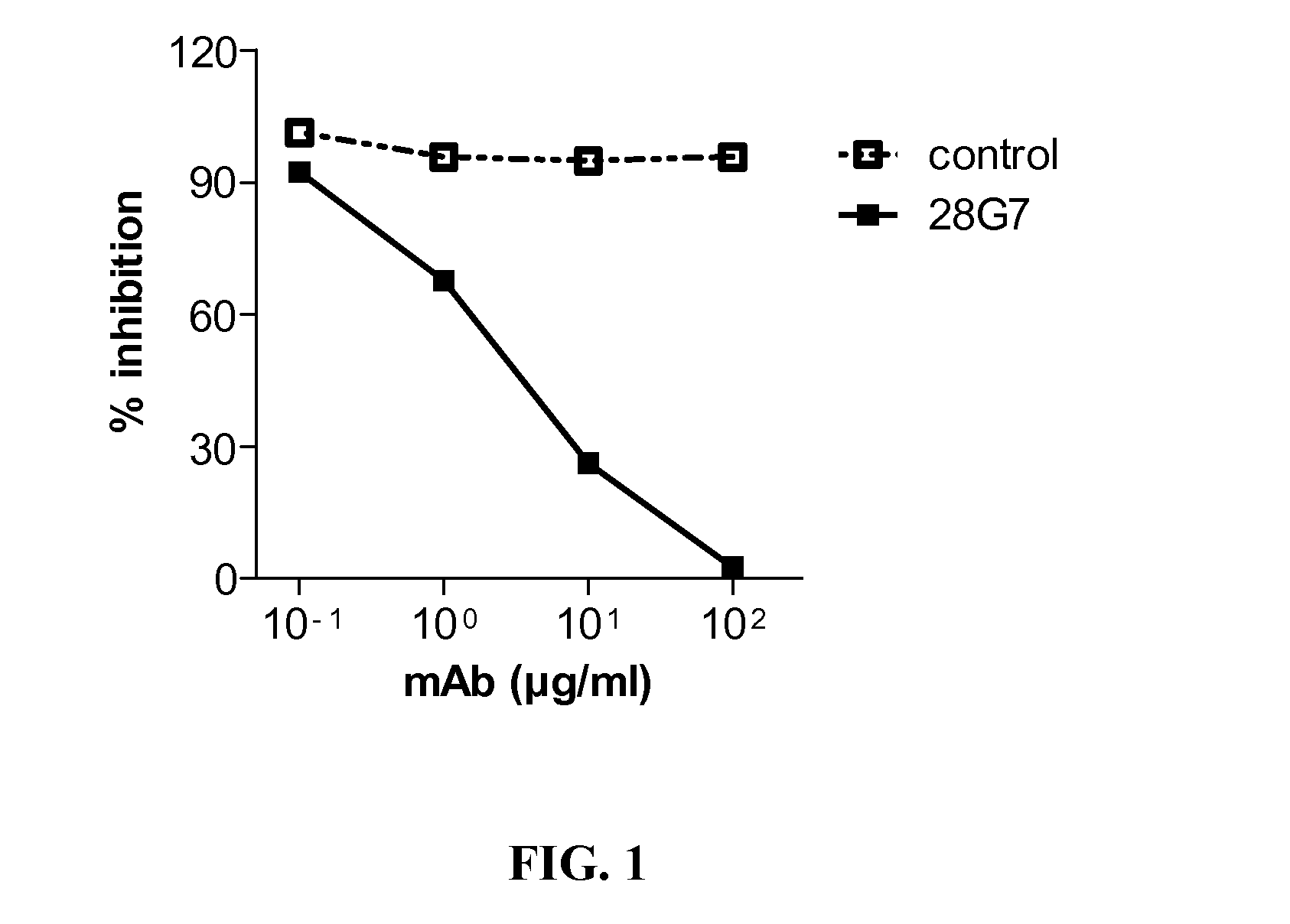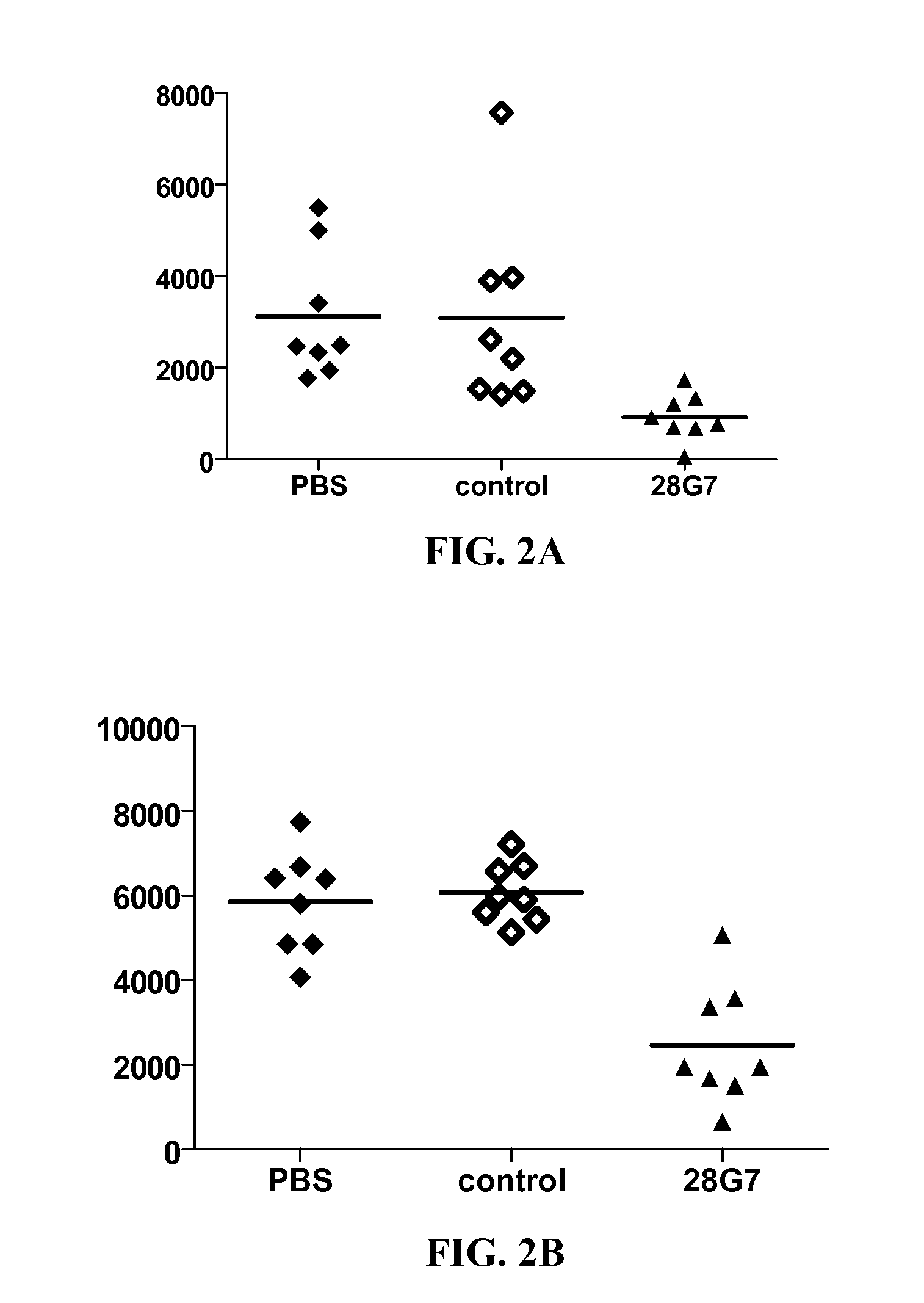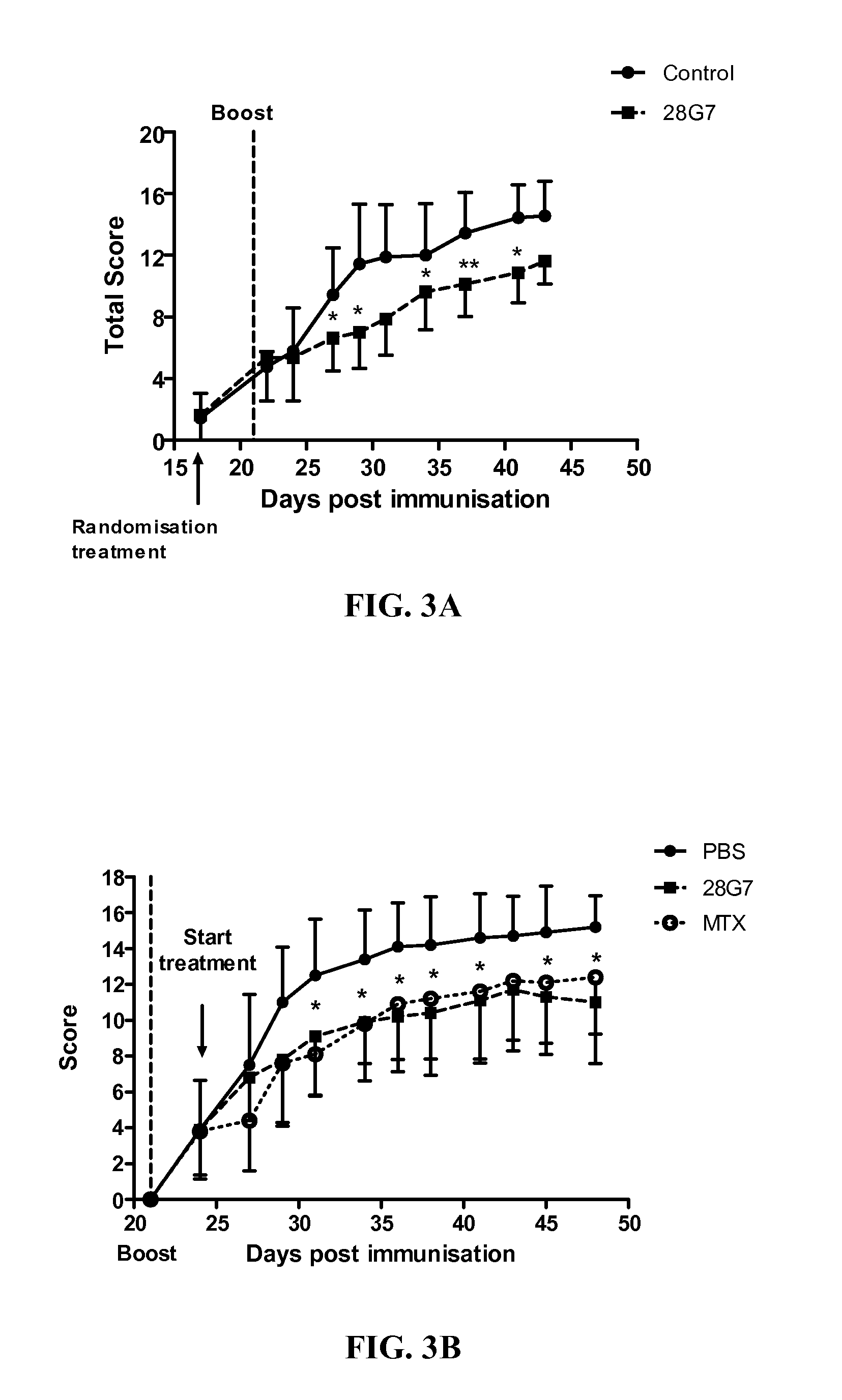Methods for restoring corticosteroid sensitivity
- Summary
- Abstract
- Description
- Claims
- Application Information
AI Technical Summary
Benefits of technology
Problems solved by technology
Method used
Image
Examples
example 1
Generation of TLR3-Specific Monoclonal Rat Anti-Mouse Antibodies
[0275]Primary screen. To obtain anti-TLR3 antibodies, LOU / c rats were immunized with a recombinant His-tagged mouse TLR3, carrier free extracellular domain recombinant protein (R&D systems, #3005-TR) and recombinant His-tagged human TLR3, carrier free extracellular domain recombinant protein (R&D systems, #1487-TR). Rats received, on day 0, one primo-immunisation with an emulsion of 50 μg of mouse TLR3+50 μg of human TLR3 diluted in PBS and Complete Freund Adjuvant, intraperitoneally, a 2nd immunization on day 14 with an emulsion of 50 μg of mouse TLR3+50 μg of human TLR3 diluted in PBS and Incomplete Freund Adjuvant, intraperitoneally, and one boost with 25 μg of mouse TLR3+25 μg of human TLR3 diluted in PBS, intravenously. Immune spleen cells were fused with X63.Ag8.653 immortalized B cells, and cultured in the presence of irradiated spleen cells.
[0276]40 culture plates were obtained and evaluated in a first screen fo...
example 2
Reporter Assay
[0279]Antibodies were tested for inhibition of TLR3 signalling in a luciferase-based reporter gene activity (293T-TLR3-ISRE). Engagement of TLR3 receptor using TLR3-agonists such as poly (I:C) has been reported to activate the type-IFN pathway including the promoter ISRE (Wietek et al. J. Biol. Chem., 278(51), p 50923, 2003). Briefly, dsRNA TLR3 agonists were used to induce TLR3 signalling in the reporter assay in the presence of anti-TLR3 antibodies, and TLR3 signalling was assessed.
[0280]Rat anti-mouse TLR3 antibodies were assessed for their ability to inhibit TLR3 signalling in a luciferase based reporter gene activity (293T-mTLR3-ISRE). FIG. 1 shows the inhibition properties of increasing doses of the antibody 28G7 (black squares, full line), in comparison with a non-relevant control antibody (control, open squares, dashed line), the inhibition of the TLR3 signalling is dose dependent, with an IC50 of 2.6 μg / ml.
example 3
TLR3 Modulation
[0281]Mouse antibodies were tested for their ability to inhibit TLR3 induced signalling in vivo. Briefly, groups of 5 mice (C57Bl / 6J, 8-10 weeks old) are constituted. PBS or anti-TLR3 antibodies (100 μg per mice or 200 μg per mice) is injected IP three hours before polyAU administration IV (20 or 100 μg). Two hours later, blood is withdrawn, serum is prepared and a serum dosage of IL-6 is performed (BD optEIA™ set mIL-6). Results are reported in FIGS. 2A and 2B. In FIG. 2A, is shown the inhibition of 100 μg of anti-mouse TLR3 antibodies 28G7 and a non-functional anti-mouse TLR3 control mAb on IL-6 secretion induced by 20 μg IPH3102. In FIG. 2B, is shown the inhibition of 200 μg of anti-mouse TLR3 antibodies 28G7, a non-functional anti-mouse TLR3 control mAb and a control irrelevant rat IgG pAb, on IL-6 secretion induced by 100 μg IPH3102.
[0282]The figures underline the fact that the anti-TLR3 mouse antibodies are able to inhibit a TLR3 ligand (here polyAU) induced sig...
PUM
| Property | Measurement | Unit |
|---|---|---|
| Time | aaaaa | aaaaa |
| Dimensionless property | aaaaa | aaaaa |
| Dimensionless property | aaaaa | aaaaa |
Abstract
Description
Claims
Application Information
 Login to View More
Login to View More - R&D
- Intellectual Property
- Life Sciences
- Materials
- Tech Scout
- Unparalleled Data Quality
- Higher Quality Content
- 60% Fewer Hallucinations
Browse by: Latest US Patents, China's latest patents, Technical Efficacy Thesaurus, Application Domain, Technology Topic, Popular Technical Reports.
© 2025 PatSnap. All rights reserved.Legal|Privacy policy|Modern Slavery Act Transparency Statement|Sitemap|About US| Contact US: help@patsnap.com



